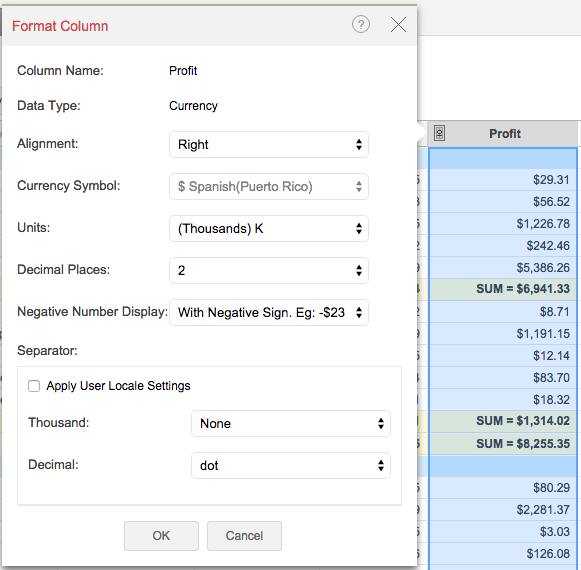
You can set the precision of decimal places for your data by pointing to Show Decimal Places and then clicking the number of decimal places you wish to display (see below). To have the dates display the years with four digits, click Date With 4 Digit Years. The date and time of the data can be tabulated in separate columns by clicking Date and Time Separately.
#Tabular view series#
For time series data, this option will show the latest values first.

You can reverse the order of the table by clicking Reverse Order. Once you have selected the pathnames you want to visualize, you can open a table by clicking the Tabulate button from the Tool Bar, or from the Display menu click Tabulate.įrom a tabular data dialog box, from the View menu, you can choose to display commas in numbers by clicking Commas. Drag additional datasets from the main screen onto the table to add them to the table.If no pathnames are in the selection list, individual pathnames can just be highlighted for quick selection.If you wish to select all of the pathnames, click Select All from the Edit menu.You can also use Ctrl+click to select multiple, non-consecutive pathnames. Click and drag your mouse to select a series of pathnames, and then click Select.Until you select a pathname, the Select button remains inactive. Highlight a pathname in the HEC-DSS Pathname list then click Select.Double-click on an individual pathname in the HEC-DSS Pathname list.There are several ways to select pathnames: To access tables, first select the pathnames of the records you wish to view. Respectively, you can tabulate data displayed in a plot dialog box, from the File menu, click Tabulate. You can view the tabular data in plot format by clicking Plot. From the File menu of a table dialog box. Tables allow you to view and edit HEC-DSS data in a vertical scrolling window that shows the ordinate (starting from the start date/time), the date and time stamp, and the values for the selected data sets. An example table produced using HEC-DSSVue is shown below.


 0 kommentar(er)
0 kommentar(er)
